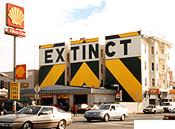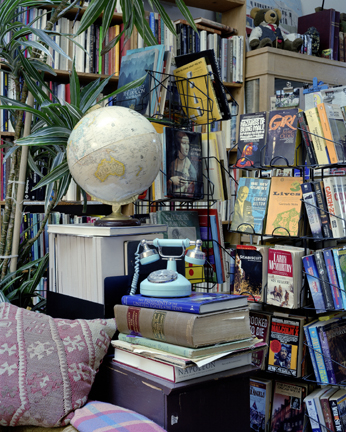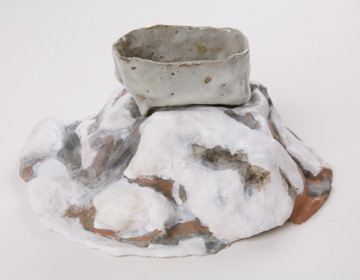
|
||
|
Portland art blog + news + exhibition reviews + galleries + contemporary northwest art
|
||
Social Calendar • Jan 22-Jan 26 Here’s the best of what’s on offer in Portland this week for sharpening
your skills. These openings, lectures and events are highly recommended as being
consistently stimulating and generous in scope. 
Rigo 23 mural in SF Mon • Jan 22 • 8:15p Rigo 23 • PSU MFA Monday Night Lecture Series 5th Avenue Cinema • Room 92 510 SW Hall St  • Rigo 23 (also known as Rigo <year> for example, Rigo 95), born (1966) Ricardo Gouveia, is a Portuguese muralist, painter, and political artist residing in San Francisco, California. He is known particularly in the San Francisco community for having painted a number of "one way" sign murals, such as the "One Tree" mural on the US-101 onramp at 10th and Bryant Streets, or the "Sky/Ground" mural at 3rd and Mission Streets. He is one of the founding members of Clarion Alley Mural Project collective and is still an active member as of 2006. He has also designed several installations as part of the 2006 Liverpool Biennial. He is considered by some art critics and curators to be part of the first generation of the San Francisco Mission School art movement. (press release) Tues • Jan 23 • 6:45p Marc Joseph: New and Used • Jessica Jackson Hutchins: Stylite Optimism Artist Talk : Reed Psychology Auditorium, room 105 Reception to follow: Douglas F. Cooley Memorial Art Gallery Reed College • Hauser Memorial Library 3203 SE Woodstock Blvd  • The Cooley Gallery is proud to present the U.S. debut of New York photographer Marc Joseph's large scale color photographs that explore the spaces and objects of independently owned book and record stores across the United States. New and Used is a chronicle, a reader, a memento and an archive. Growing up in Ohio in the 1970s, Joseph was first exposed to art, writing and music in the eccentric smaller book and record shops of downtown Cleveland, where Saturday afternoons were spent combing through the stacks in anticipation of a major future purchase, like his first, London Calling; by The Clash; or studying certain talismanic book covers like George Orwell's "Animal Farm" or Allen Ginsberg's "Howl." This was the beginning of Joseph's permanent fascination with books and records: both as public artworks and as formative private experiences. (press release)  • Portland and New York based artist Jessica Jackson Hutchins exhibits a body of sculptures inspired by traditional Chinese scholar's rocks, ascetic religious practices and domestic rituals. In Hutchins' emotional topographies, one finds small eccentric vessels perched atop "mountains," molded in tandem with the landscapes beneath them, each object dependent upon yet unfettered by the other. Hutchins suggests the erotic possibilities in the conflation of the sublime and the domestic as she collapses nature and submits it firmly to the body's needs and pleasures. Many of the objects in the exhibition have been used for serving food. Hutchins' methods hover between chance and control, recalling Fluxus investigations into consumption and conviviality. Hutchins weds porcelain with newspaper, paint, and cardboard, often adding toilet paper into the watery, porcelain slip. In the most recent works in the exhibition, clay and porcelain are fused with chicken wire. When fired, the objects burst into scarred organic forms. (press release) Fri • Jan 26 • 6:30p John O'Brian • the back room House Spirits Distillery (Medoyeff) • 2025 SE 7th Avenue • Back room supper event with John O’Brian, hosted by Matthew Stadler; food by Naomi Pomeroy, with live music TBA. Art historian and curator John O'Brian was the editor of Clement Greenberg's papers and a close associate of Greenberg. O'Brian was also founder and editor of Collapse, a seminal cultural journal in Vancouver, B.C., where he now lives and teaches. The back room has commissioned an original essay about the Portland Art Museum's hanging of Greenberg's collection in their new Mark Building, available in a well-made chapbook edition at the dinner. "As a critic, Greenberg held out for the long tradition of art-making and all that that connotes about painting, sculpture and continuity as opposed to alternative media and rupture. The Portland Art Museum has consistently focused on traditional media, too, opposing forms of radical discontinuity. Since its inception in 1892, it has looked to Europe and the Eastern side of the North American continent for direction, a habit of mind central to the museum's understanding of itself and its mandate. Greenberg and the museum, in this respect, make a good match. "Whether Greenberg and his collection make an equally good match with Portland, a self-inventing West Coast city that looks North and South more than it looks East, is another question. My guess is that, given a choice, artists in the city would opt for the counterimages and counternarratives that have opposed Greenbergian dicta since the 1960s, but I may be mistaken. Only the artists and their supporters can speak to that with authority." —from "Greenberg Variations," by John O'Brian (commissioned by the back room) (press release) |

